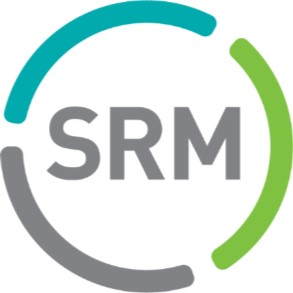![AccountBoost_Blog_Image[87]](https://blog.srmcorp.com/hs-fs/hubfs/AccountBoost_Blog_Image%5B87%5D.png?width=839&name=AccountBoost_Blog_Image%5B87%5D.png)
It’s an inconvenient truth - the timing of customers’ financial needs don’t always align with balance sheet strategy or marketing campaigns. Due to the pandemic, banks and credit unions were flooded with an unprecedented level of deposits but faced muted demand for the loans that put these funds to work.
Although no one has a silver bullet to synchronize customer needs with portfolio strategy, there may be an equation. SRM’s latest white paper, How Financial Institutions Can Boost Account Growth to Move with Changing Margins, offers a disciplined approach to being present when customers are “in-market” as well as a “growth equation” to boost account growth performance.
Being Present When Customers Are “In-Market”
Even before the pandemic, branch traffic was declining across the industry. From one perspective, this is a sign of success; financial institutions (FIs) have equipped customers with the technology to meet many of their needs when and where they want.
Unfortunately, there’s an opportunity cost attached to every foregone in-person customer interaction. For all the convenience and efficiency of online transactions, it is hard to imagine a viable substitute for those impromptu branch conversations…those one-on-ones that allow bankers to ask about a customer’s changing financial needs and organically offer solutions.
A current or prospective accountholder may eventually walk into the branch for advice, but how many others have been intercepted by competing offers?
It’s incumbent on the institution to proactively initiate conversations that make it easy for account holders to self-identify as “in-market” when it’s right for them - not when the FI happens to be running a promotional campaign.
Capacity + Propensity + Awareness = Growth
There’s a general equation underpinning any effective sales process. A prospective customer must have the means, capacity, and propensity (inclination) to buy the product. Applying this to the lending process, a prospect with an acute need (high propensity) but a poor credit score (low capacity) is unlikely to generate a favorable outcome for either party. The same can be said for a customer with impeccable credit but no current need for a loan - he is hardly a near-term prospect.
The key is to bring together available capacity and propensity data – both generated by the FI and benchmarked through outside sources - to focus and prioritize resources on those prospects with the greatest likelihood of success. Here’s where the final variable enters the equation - awareness. Awareness involves the art of marketing as well as science.
For instance, while it’s essential to attract a prospective customer’s attention while they’re in the market for the product, building familiarity through prior exposure is also valuable. This is where a well-conceived marketing campaign pays off - and its value can be quantified.
The Bottom Line
Banks and credit unions have dealt with an unprecedented influx of deposits over the past year yet are challenged to efficiently put these funds to profitable use in a low-interest rate/low-loan demand environment. By applying the account growth equation when analyzing an FI’s internal and external data, lenders may find the rewards worth making the calculations.
SRM’s white paper, How Financial Institutions Can Boost Account Growth to Move with Changing Margins, offers more ways for banks and credit unions to employ benchmark analysis in designing proactive outreach to meet customer needs and boost portfolio growth for FIs.

![SRM_Account-Boost-CTA[92]](https://blog.srmcorp.com/hs-fs/hubfs/SRM_Account-Boost-CTA%5B92%5D.png?width=3333&name=SRM_Account-Boost-CTA%5B92%5D.png)


